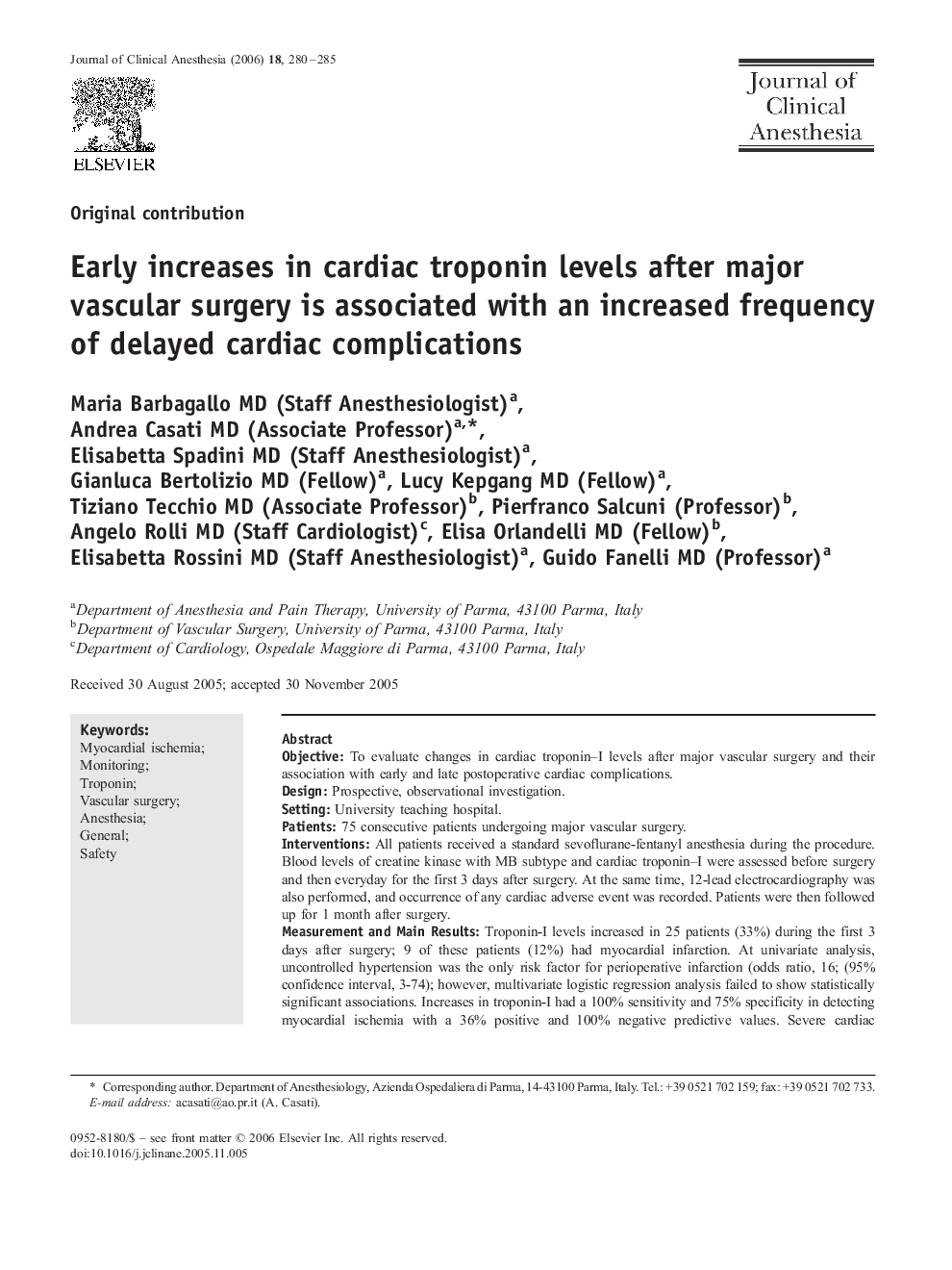| Article ID | Journal | Published Year | Pages | File Type |
|---|---|---|---|---|
| 2763872 | Journal of Clinical Anesthesia | 2006 | 6 Pages |
ObjectiveTo evaluate changes in cardiac troponin–I levels after major vascular surgery and their association with early and late postoperative cardiac complications.DesignProspective, observational investigation.SettingUniversity teaching hospital.Patients75 consecutive patients undergoing major vascular surgery.InterventionsAll patients received a standard sevoflurane-fentanyl anesthesia during the procedure. Blood levels of creatine kinase with MB subtype and cardiac troponin–I were assessed before surgery and then everyday for the first 3 days after surgery. At the same time, 12-lead electrocardiography was also performed, and occurrence of any cardiac adverse event was recorded. Patients were then followed up for 1 month after surgery.Measurement and Main ResultsTroponin-I levels increased in 25 patients (33%) during the first 3 days after surgery; 9 of these patients (12%) had myocardial infarction. At univariate analysis, uncontrolled hypertension was the only risk factor for perioperative infarction (odds ratio, 16; (95% confidence interval, 3-74); however, multivariate logistic regression analysis failed to show statistically significant associations. Increases in troponin-I had a 100% sensitivity and 75% specificity in detecting myocardial ischemia with a 36% positive and 100% negative predictive values. Severe cardiac complication 1 month after surgery was reported in 5 patients (6.6%). The increase of cardiac troponin-I levels during the first 3 postoperative days was associated with an increased frequency of major cardiac complication at 1-month follow-up (P = 0.003), with a 100% sensitivity, 71% specificity, and 100% negative predictive value.ConclusionsMyocardial infarction after major noncardiac vascular surgery occurs in up to 12% of cases. Perioperative monitoring of troponin-I plasma levels may help to identify patients at increased risk for cardiac morbidity not only early after surgery but also during the first postoperative month.
